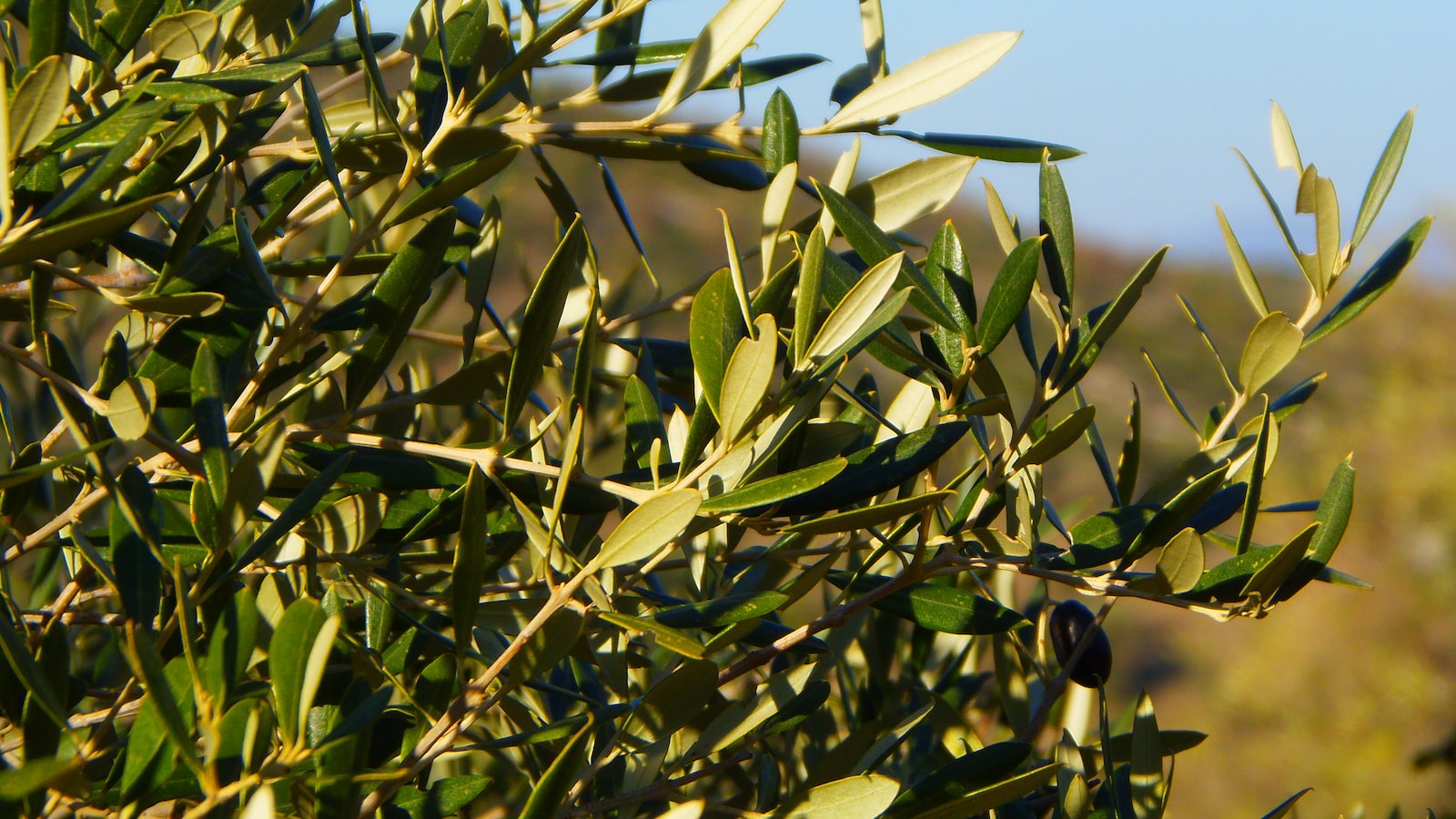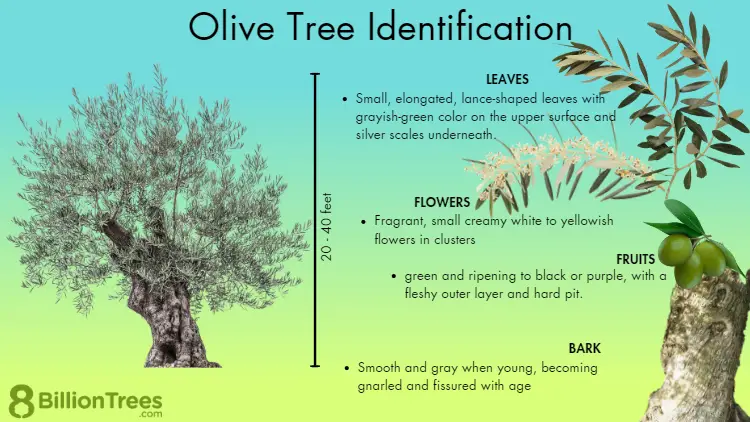The mighty olive tree, standing tall and steadfast in the vast Mediterranean landscape, has captured the admiration of generations with its timeless grace. With its gnarled branches reaching towards the heavens and its shimmering silver-green leaves dancing in the gentle breeze, this ancient arboreal marvel has become a symbol of peace and prosperity. Whether you find yourself strolling through the sun-kissed groves or simply contemplating a jar of tangy olives, it’s time to unravel the enigmatic charm of this iconic tree. In this article, we will guide you through the captivating journey of how to identify an olive tree, unraveling its unique features and helping you embrace the essence of this enduring natural wonder. So, grab a branch and embark on this expressive expedition of discovery!
Unveiling the Mysteries: Discovering the Characteristics of Olive Trees
Identification Made Easy:
Whether you are an avid nature enthusiast or simply want to distinguish an olive tree from the rest, understanding its unique characteristics is essential. Here, we unveil the secrets to identifying these majestic trees with ease.
Distinctive Physical Features:
An olive tree possesses several distinct physical features that set it apart. Look for these key characteristics:
- Leaves: Olive trees have long, narrow leaves with a gray-green hue. They are also covered in fine, silver hairs, giving them a slightly fuzzy texture.
- Bark: The bark of an olive tree is typically smooth and grayish in color. As the tree ages, it develops intricate patterns and fissures.
- Trunk: One remarkable feature of an olive tree’s trunk is its gnarled and twisted appearance. The irregular shapes add a unique charm to these ancient trees.
Practical Tips for Identification:
If you find yourself surrounded by numerous tree species and want to identify an olive tree specifically, consider these helpful tips:
| Feature | Description |
|---|---|
| Leaf Shape | Olive tree leaves are elongated with pointed tips, resembling an elliptical shape. |
| Branching Pattern | Observe the branches that grow in a twisting and zigzagging manner, further emphasizing the olive tree’s unique appearance. |
| Fruit | During the appropriate season, look for small, green fruit that gradually ripens and turns black. |
Now equipped with this knowledge, you can confidently identify an olive tree among a sea of foliage. Embrace the mystique surrounding these ancient wonders and let your curiosity soar!

A Visual Guide: Identifying Olive Trees by Their Leaves and Bark
Olive trees, with their distinctive leaves and bark, have been cultivated for centuries for their beautiful fruit and versatile oil. If you’re wondering how to identify an olive tree, look no further! In this visual guide, we’ll walk you through the key features to look out for when determining whether a tree is indeed an olive tree.
One of the most distinguishing characteristics of an olive tree is its leaves. They are evergreen and have a unique silver-grey color on the top surface, while the underside is covered in fine hairs. The leaves are elongated and lance-shaped, with a pointed tip and smooth edges. To aid in identification, take note of the leaf arrangement on the branches, as they usually grow opposite each other. The leaves emit a pleasant aromatic fragrance when crushed, similar to that of fresh olives.
To further confirm that you’ve spotted an olive tree, examine the bark closely. Olive trees have distinctive, gnarled, and twisted trunks, which add to their timeless beauty. The bark is smooth and pale grey in young trees, gradually becoming more fissured and rugged with age. Occasionally, you may also notice horizontal bands or stripes on the trunk. These fascinating bark patterns serve as a testament to the tree’s longevity and vitality. Now that you know what to look for, use the table below to help you in identifying these features of an olive tree.
| Feature | Description |
| Leaf Color | Silver-grey on the top surface |
| Leaf Shape | Elongated, lance-shaped, pointed tip, smooth edges |
| Leaf Arrangement | Growing opposite each other on the branches |
| Bark | Smooth, pale grey, gnarled, twisted, becomes fissured with age |
| Bark Patterns | Occasional horizontal bands or stripes |
With this visual guide at your disposal, you’ll be able to confidently identify olive trees by their leaves and bark. Whether you’re an enthusiast, a botanist, or simply intrigued by these majestic trees, take pleasure in connecting with the wonders of nature and the unmistakable beauty of the olive tree.
Cracking the Case: Analyzing the Fruit and Inflorescences of Olive Trees
Olive trees are known for their beautiful fruits and inflorescences, but identifying an olive tree can sometimes be a challenging task. In this post, we will delve deep into the intricate details of the olive tree to help you crack the case and easily identify this majestic plant.
When examining an olive tree, one of the key features to look for is its leaves. Olive tree leaves are elongated and lanceolate, with a grayish-green color on the top surface and a silver hue on the underside. The leaves are leathery in texture and have a distinctive aroma when crushed. By carefully observing the leaves of a tree, you can quickly determine if it belongs to the olive tree family.
Another characteristic to consider is the bark of the olive tree. Olive tree bark has a rough texture and is typically grayish-brown in color. It develops deep furrows and cracks as the tree ages, providing a unique pattern that helps in identification. Additionally, olive trees have a gnarled trunk, adding to their charm and making them easily distinguishable from other tree species.
To further assist you in identifying olive trees, we have compiled a table summarizing some key features and tips to look out for. In the table below, you will find valuable information regarding the leaves, fruits, and inflorescences of olive trees. Remember, these features may vary depending on the specific olive tree variety, so it’s always advisable to consult a botanical expert for accurate identification.
| Features | Tips |
|---|---|
| Leaves | Elongated, lanceolate leaves with grayish-green color on the top surface and silver hue underneath. Leathery texture and distinct aroma when crushed. |
| Fruits | Small, oval-shaped fruits that turn from green to black when ripe. They have a high oil content and a bitter taste if consumed directly. |
| Inflorescences | Small, white flowers that bloom in clusters. The flowers have four petals and are highly fragrant. |
By carefully observing these features and utilizing the tips provided, you will gain the knowledge and skills needed to confidently identify olive trees. So, the next time you come across this remarkable plant, you’ll be able to crack the case and appreciate the beauty of olive trees even more.
Olive Tree or Look-Alike: Tips to Differentiate Olive Trees from Similar Species
Olive trees are not only beautiful additions to any landscape but also offer delicious fruits and provide shade during sunny days. However, it can be challenging to differentiate olive trees from similar species, especially for those with limited knowledge in botany. To help you correctly identify an olive tree, here are some tips and features to look out for.
Leaf Characteristics: One of the easiest ways to tell if a tree is an olive tree is by examining its leaves. Olive tree leaves are elongated and lance-shaped, with a grayish-green color on the top and a silver hue on the underside. They are also narrow and leathery, with smooth edges. In comparison, other trees may have broader, rounded, or serrated leaves.
| Tips to Differentiate Olive Trees: | Features |
|---|---|
| Olive Trees | – Elongated, lance-shaped leaves – Grayish-green on top, silver underneath – Narrow and leathery – Smooth edges |
| Similar Species | – Broader or rounded leaves – Different leaf color – Serrated edges |
| Olive Fruits | – Small, oval-shaped fruits – Green when unripe, purplish-black when ripe – Bitter when raw, mild when processed |
Fruit Characteristics: Another distinctive feature of olive trees is their fruits. Olive fruits are small, usually oval-shaped and have a bitter taste when raw. When ripe, they turn from green to a deep purplish-black color. The fruits are commonly used for cooking, oil production, and even skincare products. Keep in mind that while other trees may bear fruits, they may not resemble the unique characteristics of olives.
Frequently Asked Questions
Q: What’s the quickest way to identify an olive tree in a crowd?
A: Ah, the noble olive tree, standing tall amidst a sea of greenery! Fear not, for a quick identification can be achieved through its characteristic silver-gray leaves, slender shape, and a crown that bursts with tiny, delicate white flowers.
Q: Can I rely on the fruits to identify an olive tree?
A: Absolutely! When it comes to identifying our leafy friend, the olives are a dead giveaway. Unripe olives showcase a vibrant green hue, gradually transitioning into a rich purple or black shade as they mature. Just be sure to resist the temptation of a taste test until they are all nice and pickled!
Q: Are there any telltale signs to distinguish an olive tree from its “fruity” relatives?
A: Indeed, there are! While olive trees may cause some confusion in their resemblance to other fruit-bearing counterparts, a keen observer will notice distinctive differences. Unlike its citrus-y cousins, the olive tree boasts a smooth and silver bark that peels away in delicate layers, offering a unique and elegant touch to its appearance. As we conclude our expedition through the realms of the mighty olive tree, we can’t help but marvel at its intriguing secrets and enchanting allure. From its gnarled branches, drenched in history, to the wisdom-filled leaves that whisper tales of resilience, these ancient guardians of the Mediterranean have left an indelible mark on both landscapes and cultures.
Remember, dear nature enthusiasts, that in the pursuit of identifying the olive tree, your senses will become your loyal companions. Trust the touch of its leathery leaves, the delicate scent it releases, and the soft crackle underfoot as you wander amidst the hallowed groves. Allow your eyes to embrace the slender trunks and the puzzle-like bark patterns that reveal the tree’s character like an ancient script.
Immerse yourself in their realm, a realm where time slows down and serenity envelops all who dare to linger. Stand beneath the whispering canopy, listen closely to the gentle sway of the branches, and feel the story of generations past whispered to you on the wind.
Now armed with knowledge, venture forth with confidence, for you possess the ability to distinguish an olive tree even in the most clandestine surroundings. Pay homage to these magnificent beings, for they have nurtured civilizations for millennia and continue to do so with an unwavering embrace.
So, my fellow admirers of nature’s wonders, let our exploration of olive trees be a reminder that the world is still brimming with marvels waiting to be discovered. In every hidden grove and rolling hillside, let us find solace and inspiration, knowing that we are forever connected to the roots of our planet’s extraordinary tapestry. Go forth, embrace the olive’s secrets, and may you find infinite joy in the pursuit of nature’s many enigmatic treasures.
- When to Put Weed and Feed on Lawn in Michigan - October 16, 2023
- When to Fertilize Potatoes Plants - October 16, 2023
- Can You Plant Clover in the Spring - October 16, 2023
Contents
- 1 Unveiling the Mysteries: Discovering the Characteristics of Olive Trees
- 2 A Visual Guide: Identifying Olive Trees by Their Leaves and Bark
- 3 Cracking the Case: Analyzing the Fruit and Inflorescences of Olive Trees
- 4 Olive Tree or Look-Alike: Tips to Differentiate Olive Trees from Similar Species
- 5 Frequently Asked Questions

